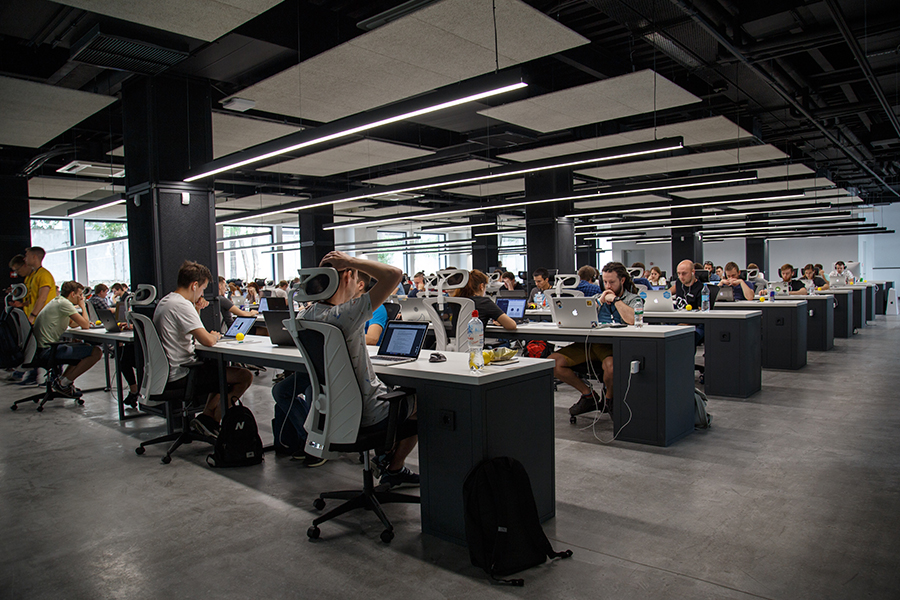"In today's world, the need to develop and retain a diverse workforce is more challenging than ever. Here's a guide on how to do it."
In today's world, the need to develop and retain a diverse workforce is more challenging than ever. Simply tasking talent acquisition with "solving" the diversity problem won't work, because a failure to also grow and develop those diverse individuals will lead to retention and engagement problems.
This is echoed in a comment from the Mercer report Diversity and Inclusion Technology: The Rise of a Transformative Market: "Leaders increasingly understand that not having a diverse organization and an inclusive culture is a systemic problem, therefore individual interventions alone will not work."
The good news is there are targeted ways to specifically support the needs of a diverse workforce. Before jumping right into the details, let's first take a look at the importance of building, maintaining and nurturing a diverse workforce.
Benefits of a Developed, Diverse Workforce
In order to survive, companies today are having to prioritize agility in every facet of the business, including in HR. Research from Mercer's Global Talent Trends 2019 report shows that approximately 30% of companies are confident in their ability to change at speed and rapidly navigate disruptive trends with minimal business upsets. So, what does an agile approach to HR look like in practice?
This agility and confidence comes, in part, from having a well-developed, diverse workforce. Upskilling employees to meet tomorrow's demands for the business can ease any transitions caused by business disruption, from digital automation to industry convergence and everything in between. Imagine the competitive position of being agile enough to smoothly navigate those broad, sweeping industry changes that are crippling competitors.
In order to get to that point, however, you need to focus on what a diverse workforce needs.
Understanding the Needs of a Diverse Work Population
To start, today's talent demands a hiring process that showcases opportunities for skills development. In Mercer's 2018 Global Talent Trends Study, only 66% of employees said their company gives them the opportunity to grow both personally and professionally.
That said, according to Mercer's Global Talent Trends 2019 report, the workplace priorities for individuals around the world differ slightly. Across the globe, employees and employers place varying degrees of priority on the need for upskilling.
In some countries, developing new skills outranks all other factors in terms of what workers want from the employment relationship. Globally, it ranks at number three in the list of what employees want from their employer. For instance:
1. Brazil: Recognition for contributions ranks first in priorities, as it does throughout most of the world, but the second priority for workers is upskilling and developing new capabilities.
2. Mexico: Having the opportunity to learn new skills and technology is the first priority for employees, followed by managing work-life balance.
3. China: For Chinese employees, work-life balance is the first priority, followed by learning new skills. Their third priority is engaging in a fun work environment.
4. Middle East: Above all else, opportunities to develop new skills and learn new technologies is the top priority in the Middle East, followed by work-life balance in second, and working on meaningful projects in third.
These preferences can play out in different ways. For instance, more than 9 out of 10 Mexican workers would be willing to work in a more casual, freelance-style arrangement, which demonstrates an appetite for new work opportunities and an interest in managing their own schedule to some degree, which ties in with their high ratings in work-life balance.
While the selections vary a bit by country, they paint an interesting picture of how — despite all the global, cultural and geographic differences — employees want very similar things from the work environment. The challenge manifests in how employers approach skills development.
Reskilling, Upskilling and Fostering Your Workforce
When it comes to reskilling and upskilling, traditional training isn't always the best method to use, because it usually doesn't address the more specific needs of a multicultural workforce. For instance, in a lecture-style session, it's challenging to get audience members to understand a subject when it isn't put into a context relevant to them. Additionally, it can prove difficult to have conversations when the audience is not comfortable broaching a subject within a broad group.
However, as Mercer's Diversity and Inclusion report notes, employers can use several unique methods that leverage new technologies to support these types of challenges. One such example is the use of private communication channels. New tools, such as those provided by Translator and other vendors, allow participants in classroom trainings to ask difficult questions anonymously, enabling the trainer to serve as a moderator for better balanced discussions. These tools also allow trainers to do pulse surveys of the audience to evaluate comfort levels with the conversation topics over time.
Leveraging new technologies and methods like this can have an impressive impact on developing your workforce — which comes with its own set of benefits, too. Though, It's worth noting that prioritizing development without an equal emphasis on retention can lead to poor results. There's nothing more frustrating than developing a key individual only to have them leverage those new skills at a competing firm. That is why, instead of seeing learning as an end goal, employers must look at it as a continuous series of steps on an employee's career journey.
While the data shows that employees crave development and appreciate its impact on their careers, employers must tap into more innovative approaches to learning in order to remain competitive. Developing all workers, including those with multicultural backgrounds and other diverse needs, is the secret to sustained business performance over time.










